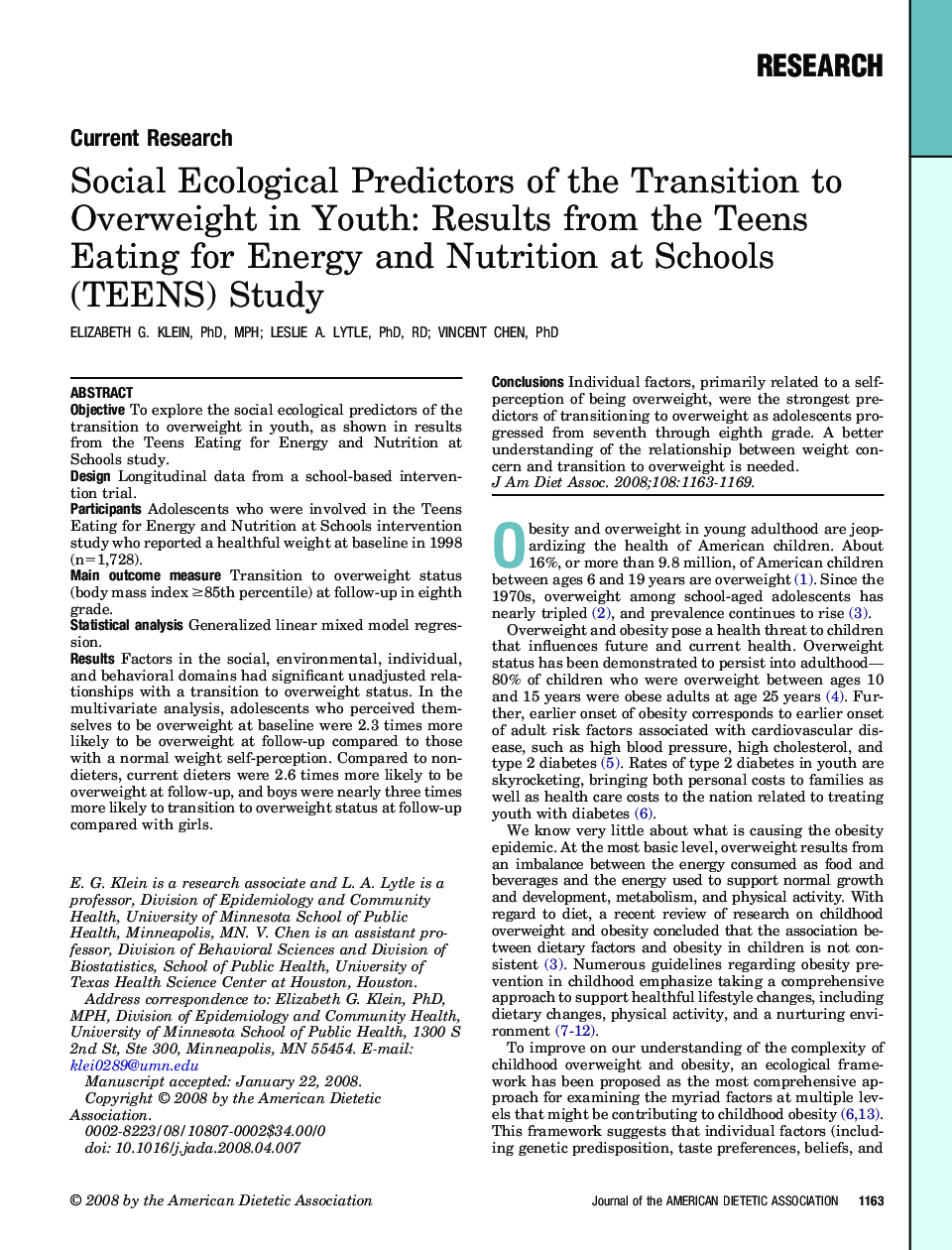| Article ID | Journal | Published Year | Pages | File Type |
|---|---|---|---|---|
| 2655300 | Journal of the American Dietetic Association | 2008 | 7 Pages |
ObjectiveTo explore the social ecological predictors of the transition to overweight in youth, as shown in results from the Teens Eating for Energy and Nutrition at Schools study.DesignLongitudinal data from a school-based intervention trial.ParticipantsAdolescents who were involved in the Teens Eating for Energy and Nutrition at Schools intervention study who reported a healthful weight at baseline in 1998 (n=1,728).Main outcome measureTransition to overweight status (body mass index ≥85th percentile) at follow-up in eighth grade.Statistical analysisGeneralized linear mixed model regression.ResultsFactors in the social, environmental, individual, and behavioral domains had significant unadjusted relationships with a transition to overweight status. In the multivariate analysis, adolescents who perceived themselves to be overweight at baseline were 2.3 times more likely to be overweight at follow-up compared to those with a normal weight self-perception. Compared to nondieters, current dieters were 2.6 times more likely to be overweight at follow-up, and boys were nearly three times more likely to transition to overweight status at follow-up compared with girls.ConclusionsIndividual factors, primarily related to a self-perception of being overweight, were the strongest predictors of transitioning to overweight as adolescents progressed from seventh through eighth grade. A better understanding of the relationship between weight concern and transition to overweight is needed.
